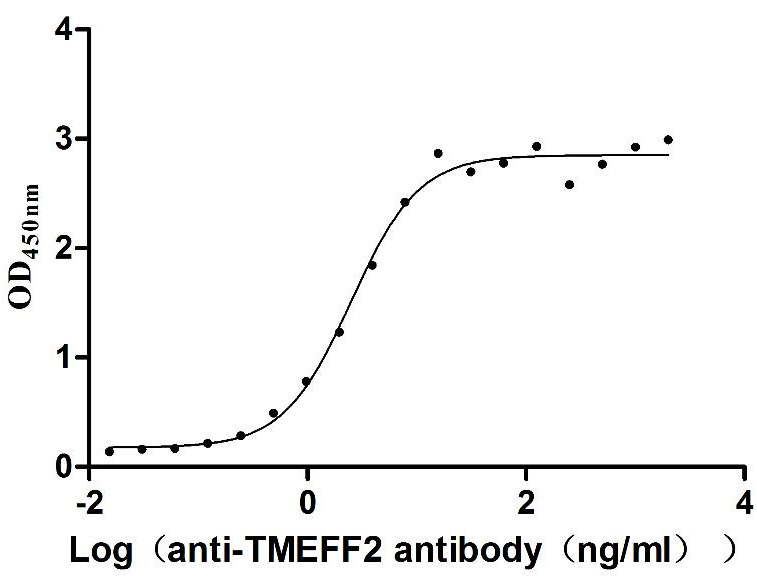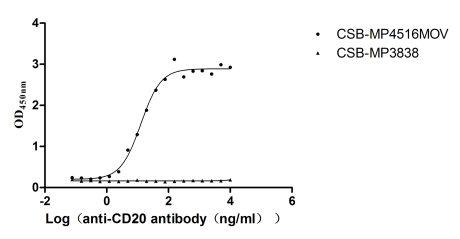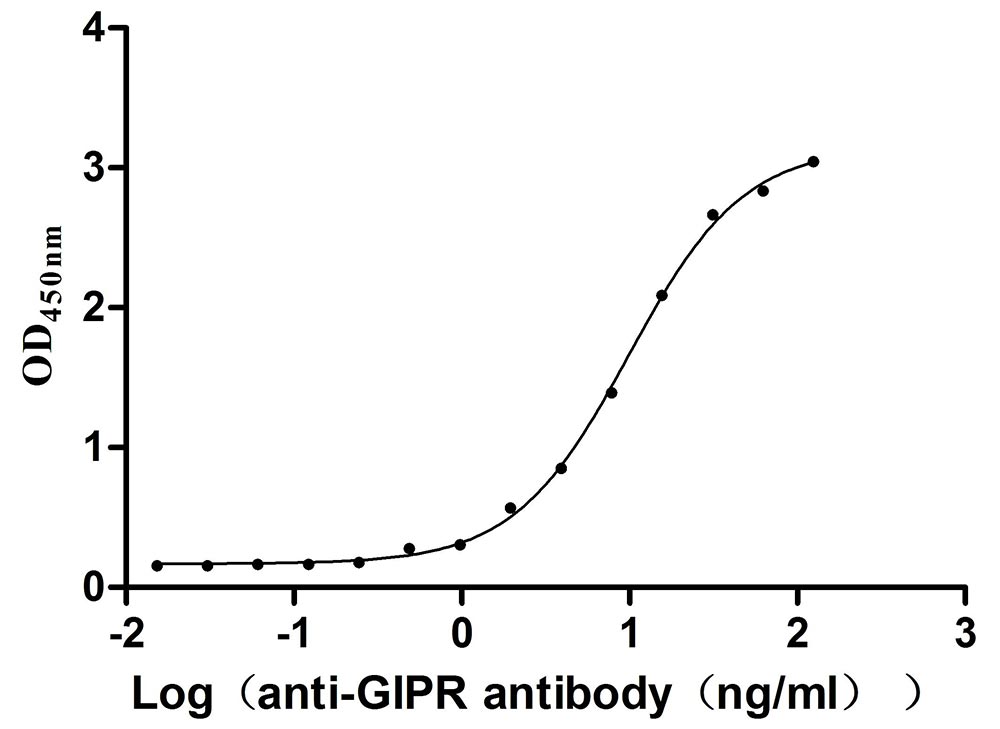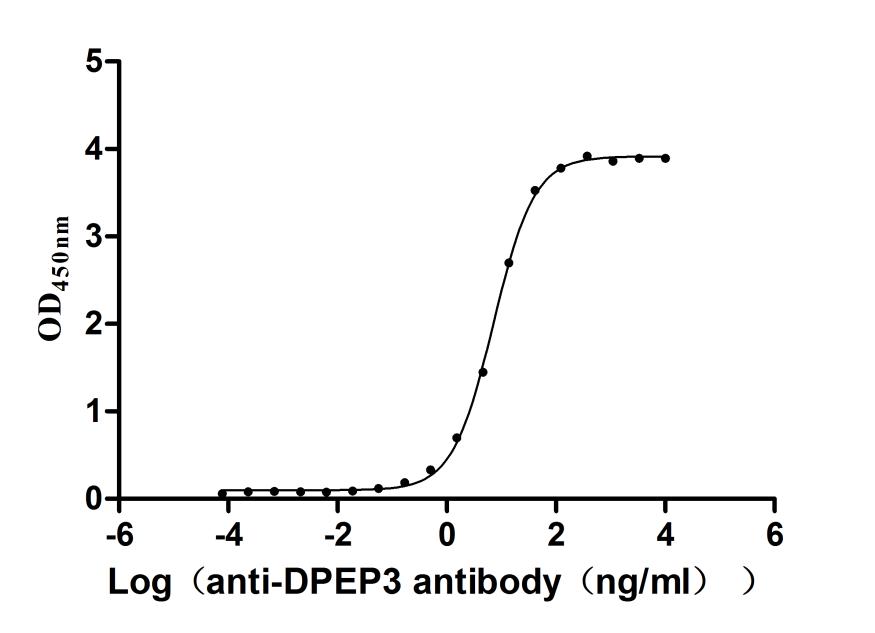Recombinant Saccharomyces cerevisiae H/ACA ribonucleoprotein complex subunit 4 (CBF5)
-
货号:CSB-YP006919SVG
-
规格:
-
来源:Yeast
-
其他:
-
货号:CSB-EP006919SVG
-
规格:
-
来源:E.coli
-
其他:
-
货号:CSB-EP006919SVG-B
-
规格:
-
来源:E.coli
-
共轭:Avi-tag Biotinylated
E. coli biotin ligase (BirA) is highly specific in covalently attaching biotin to the 15 amino acid AviTag peptide. This recombinant protein was biotinylated in vivo by AviTag-BirA technology, which method is BriA catalyzes amide linkage between the biotin and the specific lysine of the AviTag.
-
其他:
-
货号:CSB-BP006919SVG
-
规格:
-
来源:Baculovirus
-
其他:
-
货号:CSB-MP006919SVG
-
规格:
-
来源:Mammalian cell
-
其他:
产品详情
-
纯度:>85% (SDS-PAGE)
-
基因名:CBF5
-
Uniprot No.:
-
别名:CBF5; YLR175W; L9470.11H/ACA ribonucleoprotein complex subunit CBF5; EC 5.4.99.-; Centromere-binding factor 5; Centromere/microtubule-binding protein CBF5; H/ACA snoRNP protein CBF5; Small nucleolar RNP protein CBF5; p64'
-
种属:Saccharomyces cerevisiae (strain ATCC 204508 / S288c) (Baker's yeast)
-
蛋白长度:full length protein
-
表达区域:1-483
-
氨基酸序列MSKEDFVIKP EAAGASTDTS EWPLLLKNFD KLLVRSGHYT PIPAGSSPLK RDLKSYISSG VINLDKPSNP SSHEVVAWIK RILRCEKTGH SGTLDPKVTG CLIVCIDRAT RLVKSQQGAG KEYVCIVRLH DALKDEKDLG RSLENLTGAL FQRPPLISAV KRQLRVRTIY ESNLIEFDNK RNLGVFWASC EAGTYMRTLC VHLGMLLGVG GHMQELRRVR SGALSENDNM VTLHDVMDAQ WVYDNTRDES YLRSIIQPLE TLLVGYKRIV VKDSAVNAVC YGAKLMIPGL LRYEEGIELY DEIVLITTKG EAIAVAIAQM STVDLASCDH GVVASVKRCI MERDLYPRRW GLGPVAQKKK QMKADGKLDK YGRVNENTPE QWKKEYVPLD NAEQSTSSSQ ETKETEEEPK KAKEDSLIKE VETEKEEVKE DDSKKEKKEK KDKKEKKEKK EKKDKKEKKE KKEKKRKSED GDSEEKKSKK SKK
-
蛋白标签:Tag type will be determined during the manufacturing process.
The tag type will be determined during production process. If you have specified tag type, please tell us and we will develop the specified tag preferentially. -
产品提供形式:Lyophilized powder
Note: We will preferentially ship the format that we have in stock, however, if you have any special requirement for the format, please remark your requirement when placing the order, we will prepare according to your demand. -
复溶:We recommend that this vial be briefly centrifuged prior to opening to bring the contents to the bottom. Please reconstitute protein in deionized sterile water to a concentration of 0.1-1.0 mg/mL.We recommend to add 5-50% of glycerol (final concentration) and aliquot for long-term storage at -20℃/-80℃. Our default final concentration of glycerol is 50%. Customers could use it as reference.
-
储存条件:Store at -20°C/-80°C upon receipt, aliquoting is necessary for mutiple use. Avoid repeated freeze-thaw cycles.
-
保质期:The shelf life is related to many factors, storage state, buffer ingredients, storage temperature and the stability of the protein itself.
Generally, the shelf life of liquid form is 6 months at -20°C/-80°C. The shelf life of lyophilized form is 12 months at -20°C/-80°C. -
货期:Delivery time may differ from different purchasing way or location, please kindly consult your local distributors for specific delivery time.Note: All of our proteins are default shipped with normal blue ice packs, if you request to ship with dry ice, please communicate with us in advance and extra fees will be charged.
-
注意事项:Repeated freezing and thawing is not recommended. Store working aliquots at 4°C for up to one week.
-
Datasheet :Please contact us to get it.
靶点详情
-
功能:Catalytic subunit of H/ACA small nucleolar ribonucleoprotein (H/ACA snoRNP) complex, which catalyzes pseudouridylation of rRNA. This involves the isomerization of uridine such that the ribose is subsequently attached to C5, instead of the normal N1. Pseudouridine ('psi') residues may serve to stabilize the conformation of rRNAs and play a central role in ribosomal RNA processing. The H/ACA snoRNP complex also mediates pseudouridylation of other types of RNAs. Catalyzes pseudouridylation at position 93 in U2 snRNA. Also catalyzes pseudouridylatio...显示更多
-
基因功能参考文献:
- rRNA pseudouridylation defects resulted from a deficient pseudouridylate synthetase affect ribosomal ligand binding and translational fidelity from yeast to human cells. PMID: 22099312
- two molecules of Cbf5p interact with a binding platform constituted by the 5' end of the RNA, the single-stranded hinge domain containing the conserved H box, and the 3' end of the molecule, including the conserved ACA box PMID: 16931875
- box H/ACA RNP assembly factor Naf1p contains a domain homologous to Gar1p mediating its interaction with Cbf5p PMID: 17612558
- The s demonstrate that Shq1p binds the pseudourydilating enzyme Cbf5p through the C-terminal domain, in synergy with the N-terminal domain. PMID: 19426738
-
亚细胞定位:Nucleus, nucleolus. Chromosome, centromere. Cytoplasm, cytoskeleton.
-
蛋白家族:Pseudouridine synthase TruB family
-
数据库链接:
KEGG: sce:YLR175W
STRING: 4932.YLR175W


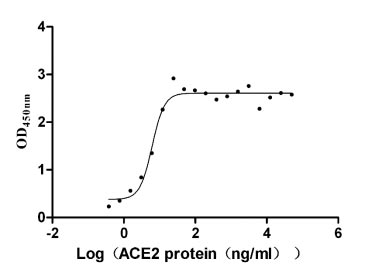

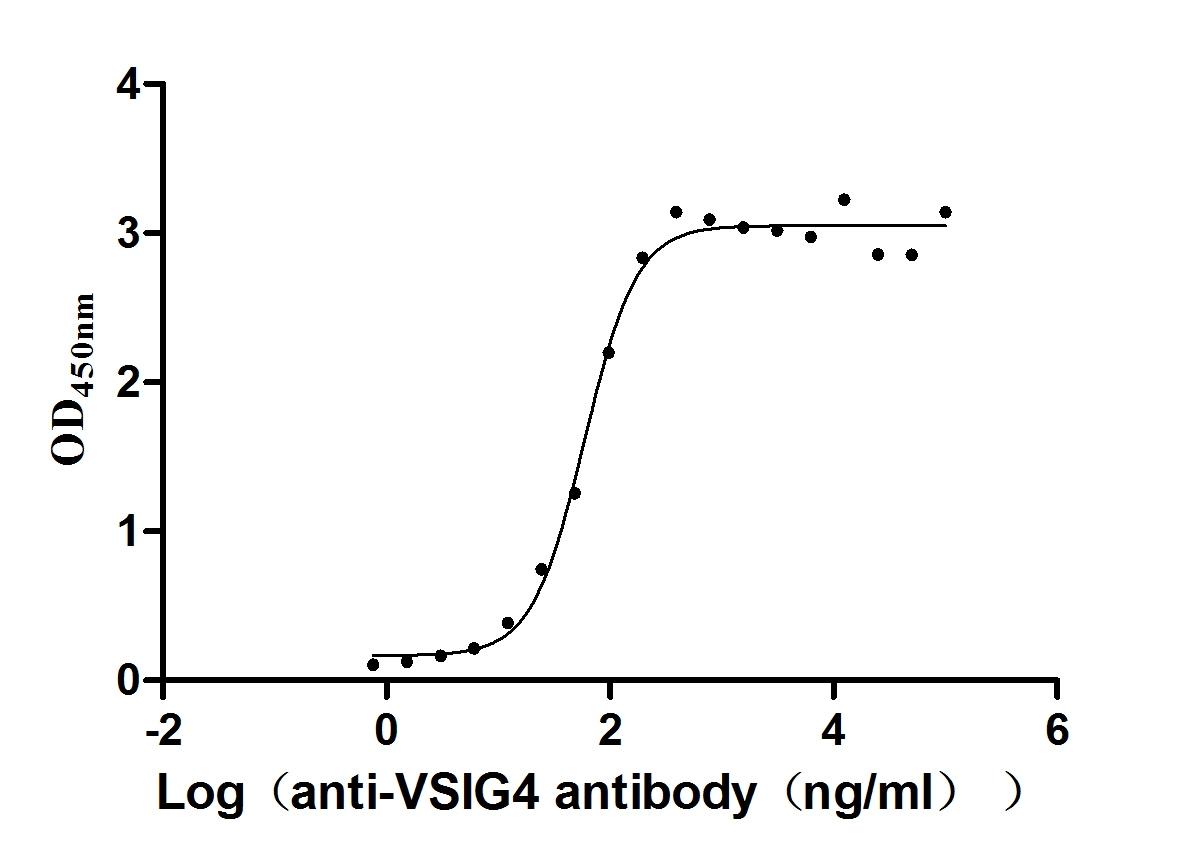
f4-AC1.jpg)
